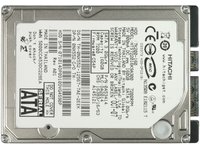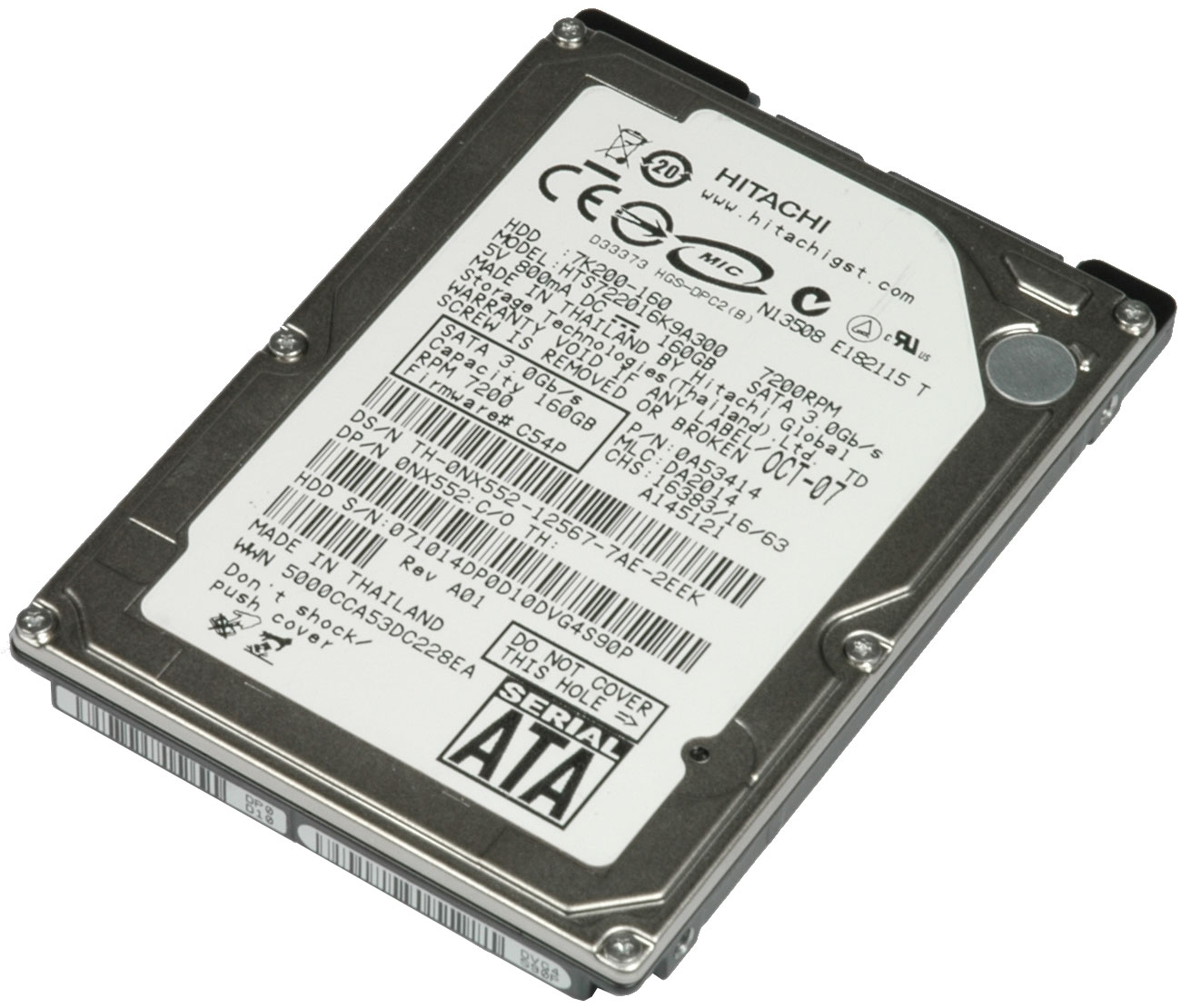Upgrading Your Notebook Hard Drive: Does It Make Sense?
Old: Hitachi Travelstar 7K200
The TravelStar 7K200 was introduced by Hitachi in 2007 and represented an incremental improvement over the previous generation, which had topped out at 160GB. In the same year, high-capacity drives had reached 250GB. This 7,200 RPM Travelstar provided more than 65 MB/s throughput while 5,400 RPM drives were limited to 50+ MB/s. Modern 7,200 RPM notebook drives, such as Seagate’s Momentus 7200.4, reach more than 100 MB/s, and Hitachi’s new Travelstar 7K500 is claimed to be even faster. This is a throughput increase of more than 50% within only two product generations.
We used a 160GB version of the Travelstar 7K200 in our test laptop. Other options includes 120, 100, and 80GB versions. The drive has a 16MB buffer and a SATA 3.0 Gb/s interface. Hitachi had models utilizing either SATA 3 Gb/s or 1.5 Gb/s, as 2007 was the year when these two interfaces transitioned. Even today, though, SATA at 1.5 Gb/s (or 150 MB/s effective) is more than sufficient. Only top-end desktop hard drives have finally reached this sequential throughput.
The 7K200 also was one of the first relatively efficient 2.5” 7,200 RPM drives. While previous generations, such as the TravelStar 7K100, consumed up to 4.6W, we measured only 3.2W idle power for the Travelstar 7K200—a good result. The new Travelstar 7K500 shows that Hitachi made more progress between 2007 and today.


Get Tom's Hardware's best news and in-depth reviews, straight to your inbox.
Current page: Old: Hitachi Travelstar 7K200
Prev Page Notebook HDD Upgrade: 7,200 RPM Yesterday And Today Next Page New: Hitachi Travelstar 7K500